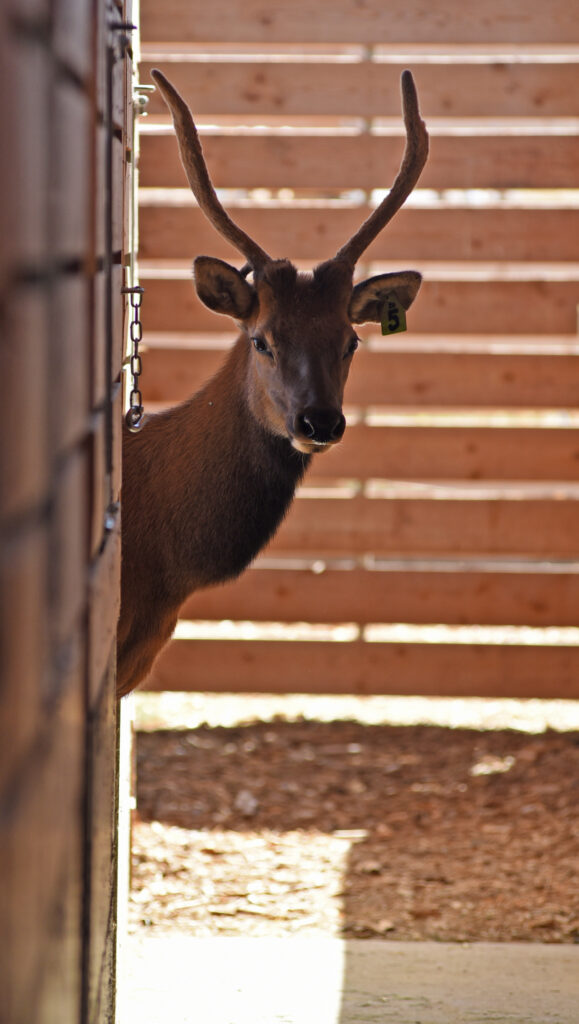
Elk Hoof Disease May Be Causing More Widespread Changes: Researchers
Elk hoof disease may be causing more widespread changes in the ungulates’ bodies than was previously known and which might also be passed down to their calves, according to researchers looking into the debilitating condition striking wapiti in Southwest Washington and beyond.

A fall research update on treponeme-associated hoof disease out this morning from Dr. Margaret Wild, who is investigating the condition at Washington State University’s College of Veterinary Medicine, states that it may be “exerting changes in molecular factors and processes around the DNA that regulate genome activity independent of DNA sequence in cells throughout the body.”
She worked with Dr. Michael Skinner at WSU’s School of Biological Sciences to look for what are called “epigenitic changes” in elk.
“Epigenetics are stable molecular processes that can influence how genes behave independent of the DNA sequence itself. Changes in an organism’s epigenetics can be caused by nutrition or environmental factors – and as this study shows, by an infectious disease,” explains a WSU press release on their research.
They studied cells in the leg tendons from 55 TAHD-infected and -free Roosevelt and Rocky Mountain elk donated by hunters in Washington, Oregon, Idaho and elsewhere and found a “statistically significant epigenetic signature” in diseased cows of both species.
“If these epigenetic changes are systemic, as we suspect,” states Wild’s update, “the changes could be passed through the germline (sperm and egg) to future generations and alter their susceptibility to TAHD. However, it is unknown whether those future generations would be more or less susceptible to the disease.”
Reports of limping elk first began popping up in the 2000s, primarily in Southwest Washington, but it is now reported in 17 counties mostly west of the Cascades but also three east of the crest, as well as in Western and Eastern Oregon, Idaho and California.
Some hunters have blamed chemicals sprayed on private timberlands to reduce competition for more valuable Douglas firs for hoof disease in elk, and Wild seemingly touches on that in her update.
“An alternative explanation for the observed epigenetic changes could be due to exposure to environmental contaminants,” she states. “In previous studies, Dr. Skinner and colleagues have detected epigenetic changes associated with contaminants, such as herbicides, that are passed through generations and are associated with increases in the occurrence of detrimental health impacts in laboratory animals; however, these have not been infectious diseases, such as TAHD. We suspect that the epigenetic changes are a result of the body responding to infection with TAHD in a similar way that the laboratory animals responded to environmental contaminants.”
Wild, Skinner and other scientists published their latest research in the journal Scientific Reports. Their paper states that “it is possible that epigenetically inherited DNA methylation changes are pre-disposing some elk to acquiring TAHD. Future studies of parents and offspring, combining pathology and epigenetic analyses, will be needed to investigate this possibility.”
WSU’s vet school was tasked by Washington’s legislature in 2017 to lead research into elk hoof disease and it hired Wild, a lifelong elk disease investigator.
Previously, she has found that TAHD appears to be “transmitted to otherwise healthy elk through exposure to soil contaminated with hooves from affected elk.”
“In the future, a non-invasive test for live elk using a cheek swab could be developed to sample more elk and potentially follow disease occurrence in individuals over time,” Wild adds at the end of her fall 2023 update. “However, this is intensive and costly research, and the benefits would need to be weighed against other research priorities to determine the projects most likely to benefit elk and reduce the negative impacts of TAHD.”
Researchers are also looking if there is any connection between elk hoof disease and bovine digital dermatitis in cows, as well as “using computer modeling to look at environmental factors such as soil type, moisture and geography to see if they can identify physical locations where elk are more likely to have the disease,” according to the WSU press release.
